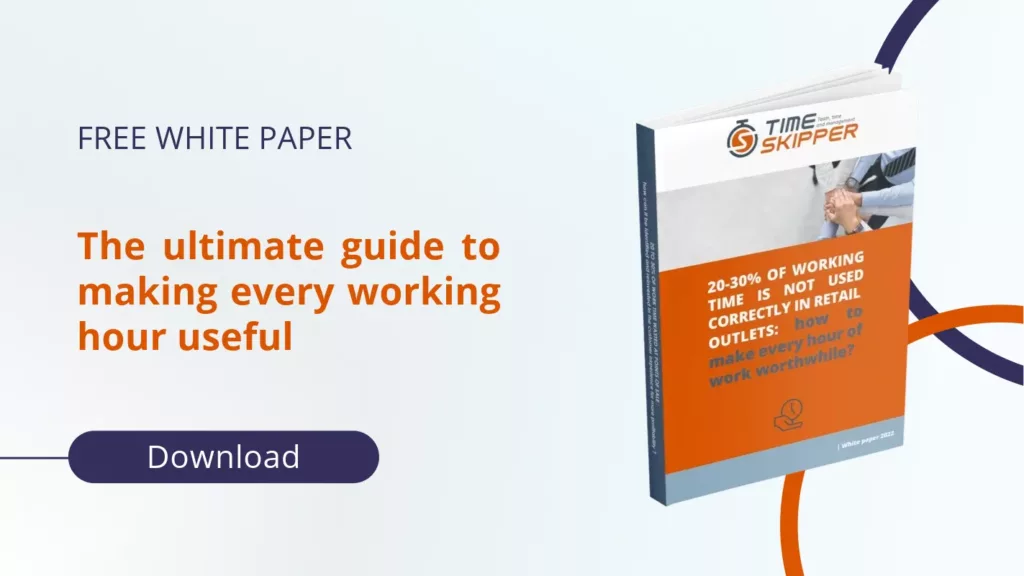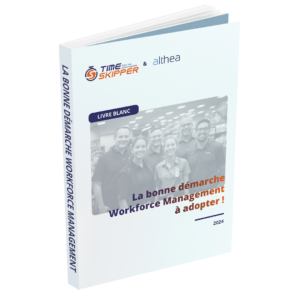With the hypermarket format in crisis, supermarkets and convenience stores crushed by competition against a backdrop of price wars and rising costs, and the meteoric rise of e-commerce, whose giants are stealing market share while imposing new consumer trends, it’s hard for retailers to stay on course for profitability! What’s more, almost intrinsic malfunctions (overwork, lack of advice, product unavailability, waiting times, stocking shelves, recruitment difficulties, etc.) dictate their law to customers and staff alike, like a constant that is integrated into the business and accepted as such.
Against this backdrop, which is hardly conducive to building customer loyalty and increasing sales, most retailers have already made far-reaching changes to improve the quality of the customer experience, and some are even gradually adopting a LEAN philosophy. Below, we explain how LEAN Management is being used in retail to meet this key challenge.
What is LEAN Management?
LEAN refers to a lean, waste-free management method that optimises the use of resources to achieve greater efficiency. In other words, doing more and better with the same resources, or even less! This concept has its origins in the Toyota production system in Japan, set up by Taïchi Ohno in the late 1940s in response to post-war constraints. Today, the LEAN approach has been extended to sectors other than industry. LEAN Management consists of eliminating what does not generate value (unnecessary travel, unsuitable services, etc.), what causes excessive workloads due to unsuitable processes (staff, plant capacity, stocks), and irregularities (operators, suppliers, machines, etc.). The method is part of a continuous improvement approach that involves all the company’s staff.
Lean management in distribution
The Lean Management approach in distribution
Waste, the main target of the LEAN method, takes the form of poorly used time, the consequence of poorly organised time for distributing and managing the activity of teams in sales outlets. The aim is to eliminate the obstacles encountered by employees, with the objective of total customer satisfaction, which means that the upstream organisation of activity has to be leaner, more flexible and ultra-optimised.
In fact, upstream management and organisation have gone from being a ‘nice to have’ to a ‘must have’, with a view to securing results that could previously simply be sustained by natural growth. Gone are the days of the golden age, but the quest for optimisation is a daily reality for all managers in the sector. Anticipating, preparing for and analysing problems, malfunctions, situations and indicators has become the daily bread of these ‘shopkeepers’: methods that perfectly illustrate the fundamentals of LEAN.
However, LEAN presupposes that the company and its employees position themselves as learners, in order to change their mentalities and habits, which are no longer adapted to the current context. The notions of productivity, industrialisation and standardisation of processes are not always welcomed by the generation of operational staff, who have been nurtured for years with attitudes and know-how based essentially on commercial practices and the showcasing of goods, which are no longer sufficient! For this reason, it takes several years for certain Lean Management levers to be integrated into the transformation plans of major food groups. But does the retail sector as a whole still have time?
And while everyone in the business knows that preparing your business in advance, involving your teams in the process and getting your organisation right are the main factors for success, this presupposes that you have the ability to make the right decisions and formalise your organisation. A LEAN approach is the most effective way of achieving this, through problem-solving, time-wasting management, the search for operational solutions by working groups that include business lines and employees, the monitoring of performance indicators and, of course, continuous improvement.
The proof is in the pudding: all the sales outlets that have applied problem solving in consultation with their teams over the last few years, and that have put in place processes enabling them to reduce wasted time (by up to 30% in some cases), have rapidly gained in effectiveness and even efficiency!
How can Lean Management be applied in the retail sector?
To formalise your organisation, you first need to have a good understanding of the processes that make up your business and the flows that influence them, so that you can highlight areas for improvement, analyse the problems raised and resolve them quickly by activating the decision-making chain. Here are a few areas of application in distribution, illustrating the use of the LEAN method :
Stocks
Overstocking with low turnover means there is a lot of back and forth, over-handling, counting to correct orders and, on arrival, a lot of extra work in the stockroom, with no added value for the company. Better anticipation of orders based on seasonal flows, events or external factors means that the time saved can be devoted to tasks that produce value, such as stock-keeping or advice.
Operational processes
If a member of staff has to carry out 3 or 4 shelving operations on a product in the course of a day, it is clear that the time spent between the stores and the sales area reduces the added value of this operation. In this case, the LEAN approach consists of understanding why this process is repeated, and putting in place corrective measures adapted to the situation, such as considering increasing the depth of the shelf, in order to rationalise movements and movements and optimise the filling of the shelf. According to the principles of LEAN Management, the new process becomes the benchmark, avoiding the multiplication of daily corrective actions with no added value: we correct in a sustainable way, while maintaining the continuous improvement approach!
The breaks
They are the main reason for loss of sales – more than half of all customers abandon their purchase if a product is out of stock – and they must be anticipated, otherwise they will result in immediate loss of earnings. This anticipation involves rigorous stock management: it is essential to monitor actual and forecast flows, to optimise the presence of products on the shelves, and allocating staff to securing this process is part of LEAN thinking.
The cash desk
Waiting at the checkout is a major irritant for customers: a better distribution of teams according to busy hours, with recourse to multi-skilling, for example to make it easier for customers to leave the checkout, is part and parcel of a continuous improvement approach. Similarly, the analysis of unknown codes at checkouts, delegated to the ‘department teams’, makes them more accountable and helps to reduce the error rate more quickly. Autonomy and collaboration are also at the heart of LEAN Management!
Staff intellectual resources
It is also up to each member of staff, in collaboration with their manager, to work on improving their own workstation by understanding the obstacles encountered and testing solutions until an optimum result is achieved, enabling standards to be drawn up for their tasks. Involving employees in improving the quality of their area of responsibility enables them to develop their skills, which is also part of a LEAN approach.
Examples of fields of application in distribution
Anglo-Saxon retailers such as Tesco in Europe and Asia, and Walmart on the American continent, launched their organisational programmes before the French retailers. The aim is to make the upstream part of the point of sale as efficient as possible (purchasing, supply and logistics) in order to reduce costs as much as possible, but also waste time by pooling effects as much as possible to minimise the impact on the sales area. Since 1990/2000, they have formalised all the processes needed to avoid downtime and ensure that best practice is applied.
Hard discounter Dia was organised according to these principles before it was sold by the Carrefour group. By losing the foundations of this organisation, the chain has accelerated its under-performance due to the poor positioning of its offer and its pricing policy.
The success story of the Atacadao chain in Brazil reinforces the idea that the application of a formalised LEAN-type model, involving teams and managers and strengthening collaboration (the offices are on the sales floor), with the desire to apply validated processes on a daily basis in a spirit of continuous improvement, has always created value and results for the chain. What seems to be true for food retailing is also, and increasingly, a reality for the world of specialised retailing, if we look at the model implemented by the Décathlon chain, which is similar to that of Atacadao: greater proximity between managers and their teams, involvement of employees in the process of buying/selling items, and their autonomy in resolving any problems they encounter.
Do you know why Taïchi Ohno, the inventor of LEAN, had the idea of developing this approach in factories? Quite simply because he had observed the work of shelf replenishers in American department stores. In the end, it’s only natural that LEAN should be taken up in the retail and distribution sectors, in order to optimise results and guarantee customers the best possible experience at the point of sale!
The TimeSkipper tool, a SaaS platform for monitoring the daily activity of teams, enables managers to improve the performance of their sales outlets by capturing and reallocating time that is poorly spent on improving the quality of the customer experience. As part of a LEAN approach, TimeSkipper helps to identify malfunctions linked to wasted time and to quickly find appropriate solutions by involving all employees.






